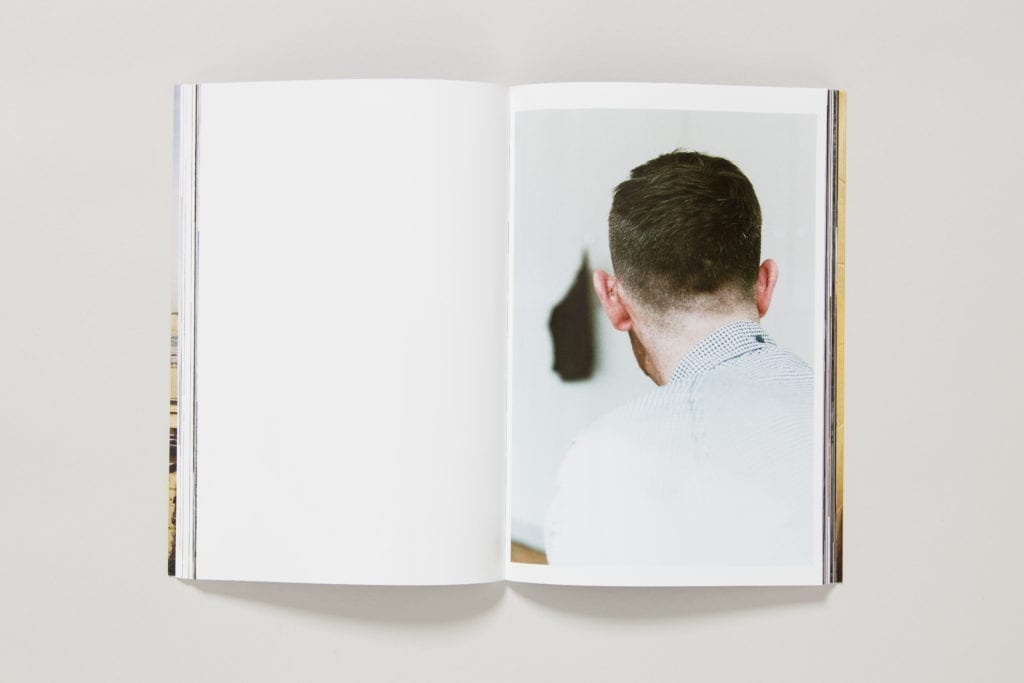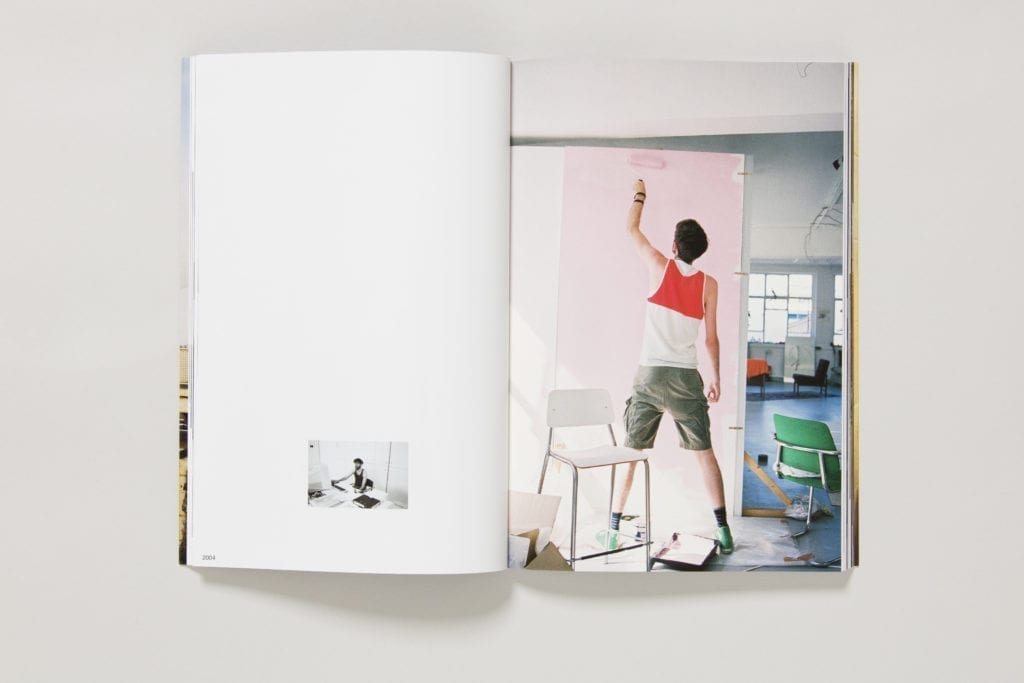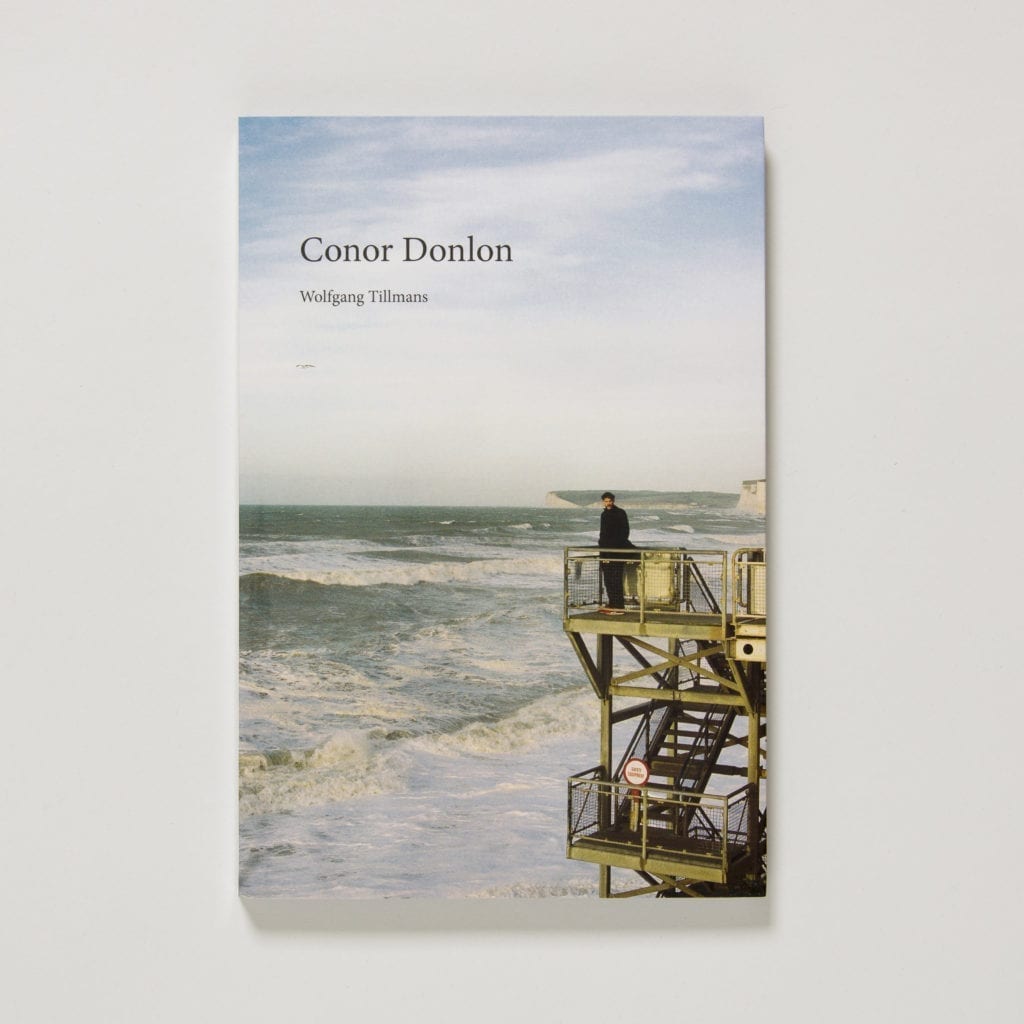“It’s not a one-two-three, but this is number four in a series of books I have published with Walther Koenig, that began in 1997 with Concorde,” says Wolfgang Tillmans.
“In 2012, it was FESPA Digital/Fruit Logistica; last year, The Cars; and now Conor Donlon. All four are monothematic, in-depth, slightly obsessive.”
Tillmans’ new publication does seem a little obsessive. Containing pictures of Conor Donlon spanning 15 years, the book mixes posed and informal shots, showing Donlon at work, at play, even at the barber’s.

Donlon joined Tillmans’ studio in 2001 and stayed for several years, before setting up his well-respected eponymous photobook shop; arranged chronologically, these portraits mark his transition from young graduate to creative linchpin, but they also show Tillmans’ shifting perspectives on the man.
“What’s interesting is the narrative shifts,” he explains. “In some pictures he is working as my assistant; others were taken after work or on holiday. But he also appeared in some of the rare fashion shoots I did. There is an image from a fashion story I styled for purple Magazine. It records a moment of romantic love from my perspective, although we were never together, then getting out of that and over that, and over time developing our work relationship and a long-term friendship.”
“A portrait is always a portrait of two people in the time that they’re in,” he adds. “If a portrait was a recording, a psychological record of a person, it would be possible for two different people to take the same portrait. But really every portrait is different, even if it is taken by the same person… In German there is a saying, ‘As you call into the forest it will sound back’, meaning that the echo is a reflection of how you called out. The way I look at a portrait is that what will be captured is not so much characteristic of the person, it is the reaction of the photographer to the person and how the person reacts to the process.”

Donlon’s hair greys, his haircuts change, his beard waxes and wanes – a former fashion student, he has a quirky style which evolves over time. Tillmans has a keen eye for this changing self-presentation – it’s often written off as superficial or vain, he points out, but experimenting with how you look can be playful and life-affirming.
“I never say it is bad to want to look good or a particular way, because in a way we are wed to our bodies,” he says. “It is an insurmountable thing – this is the body we have, so let’s celebrate it or play around with it.”
In his introduction, the Guardian’s culture editor Alex Needham identifies Donlon’s look with “the grand tradition of street style”, and the book is refreshingly streetwise too – there are shots of Donlon in elegant galleries and bookshops, but there are also images from clubs and bars, and literally from the street, when the smoking ban forced drinkers outside. To Tillmans they represent a particular London scene, but also the passing of time – a historical epoch in the East End, and the way it has evolved.

“Standing outside a pub because we can’t smoke inside – I am an avid and very alert observer of time and culture, and I would think ‘It’s all in this picture now’,” he says. “I felt it was a special time, a special moment and place,” he adds.
“Now a lot of the places have closed and everything has moved further east or north, or just not been replaced. We all know London will always reinvent itself and find a way of expressing itself, but we also know it is a hard time now. Life is being squeezed out of the centre. [Conor Donlon shows] a time that maybe has passed, but it also shows that time has passed simply by the fact that the years have passed.”
Conor Donlon by Wolfgang Tilmans is published by Walther Koenig. For more information, go here.
